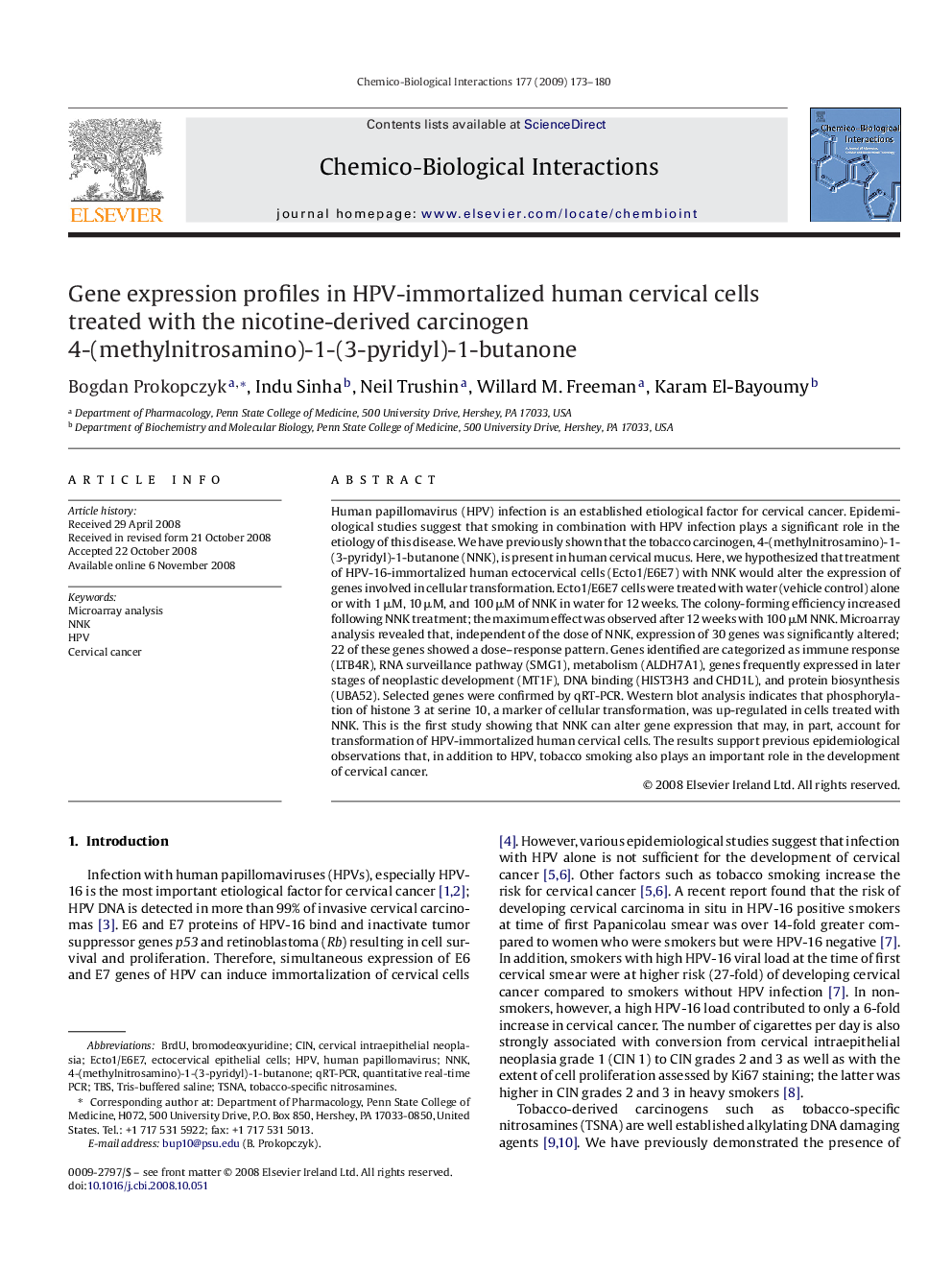| کد مقاله | کد نشریه | سال انتشار | مقاله انگلیسی | نسخه تمام متن |
|---|---|---|---|---|
| 2581714 | 1130204 | 2009 | 8 صفحه PDF | دانلود رایگان |

Human papillomavirus (HPV) infection is an established etiological factor for cervical cancer. Epidemiological studies suggest that smoking in combination with HPV infection plays a significant role in the etiology of this disease. We have previously shown that the tobacco carcinogen, 4-(methylnitrosamino)-1-(3-pyridyl)-1-butanone (NNK), is present in human cervical mucus. Here, we hypothesized that treatment of HPV-16-immortalized human ectocervical cells (Ecto1/E6E7) with NNK would alter the expression of genes involved in cellular transformation. Ecto1/E6E7 cells were treated with water (vehicle control) alone or with 1 μM, 10 μM, and 100 μM of NNK in water for 12 weeks. The colony-forming efficiency increased following NNK treatment; the maximum effect was observed after 12 weeks with 100 μM NNK. Microarray analysis revealed that, independent of the dose of NNK, expression of 30 genes was significantly altered; 22 of these genes showed a dose–response pattern. Genes identified are categorized as immune response (LTB4R), RNA surveillance pathway (SMG1), metabolism (ALDH7A1), genes frequently expressed in later stages of neoplastic development (MT1F), DNA binding (HIST3H3 and CHD1L), and protein biosynthesis (UBA52). Selected genes were confirmed by qRT-PCR. Western blot analysis indicates that phosphorylation of histone 3 at serine 10, a marker of cellular transformation, was up-regulated in cells treated with NNK. This is the first study showing that NNK can alter gene expression that may, in part, account for transformation of HPV-immortalized human cervical cells. The results support previous epidemiological observations that, in addition to HPV, tobacco smoking also plays an important role in the development of cervical cancer.
Journal: Chemico-Biological Interactions - Volume 177, Issue 3, 12 February 2009, Pages 173–180